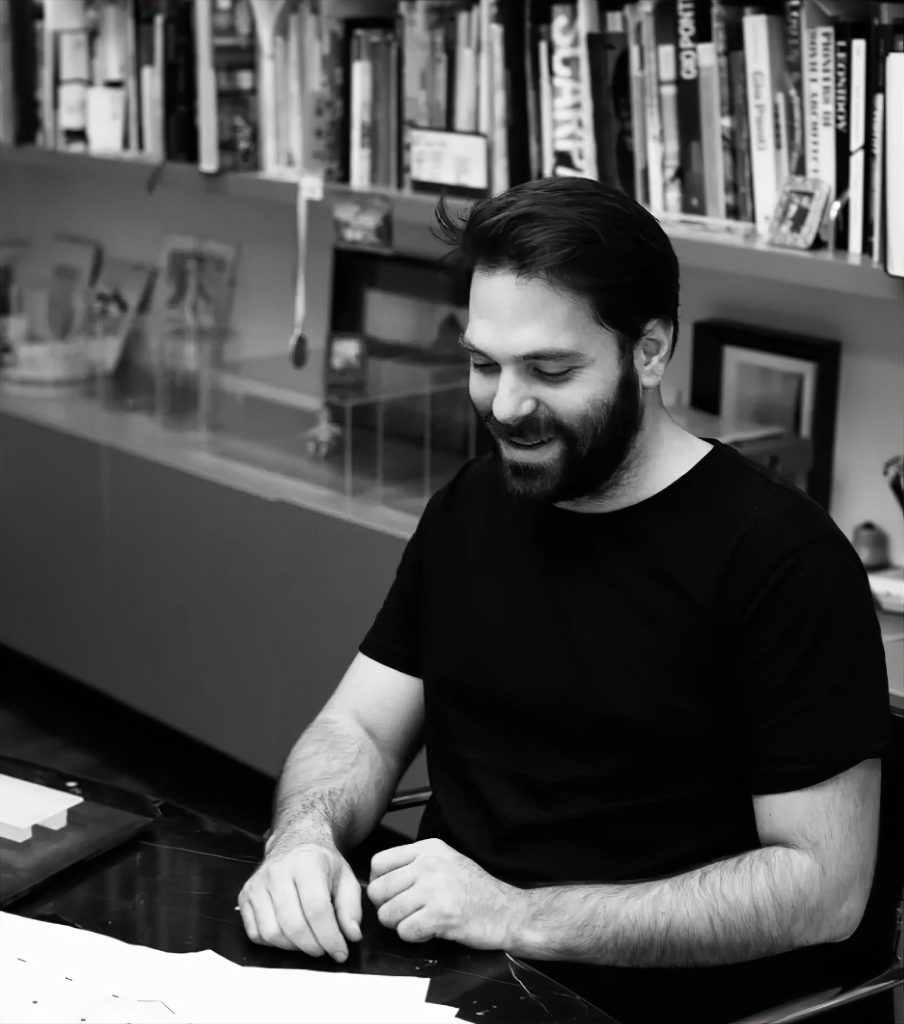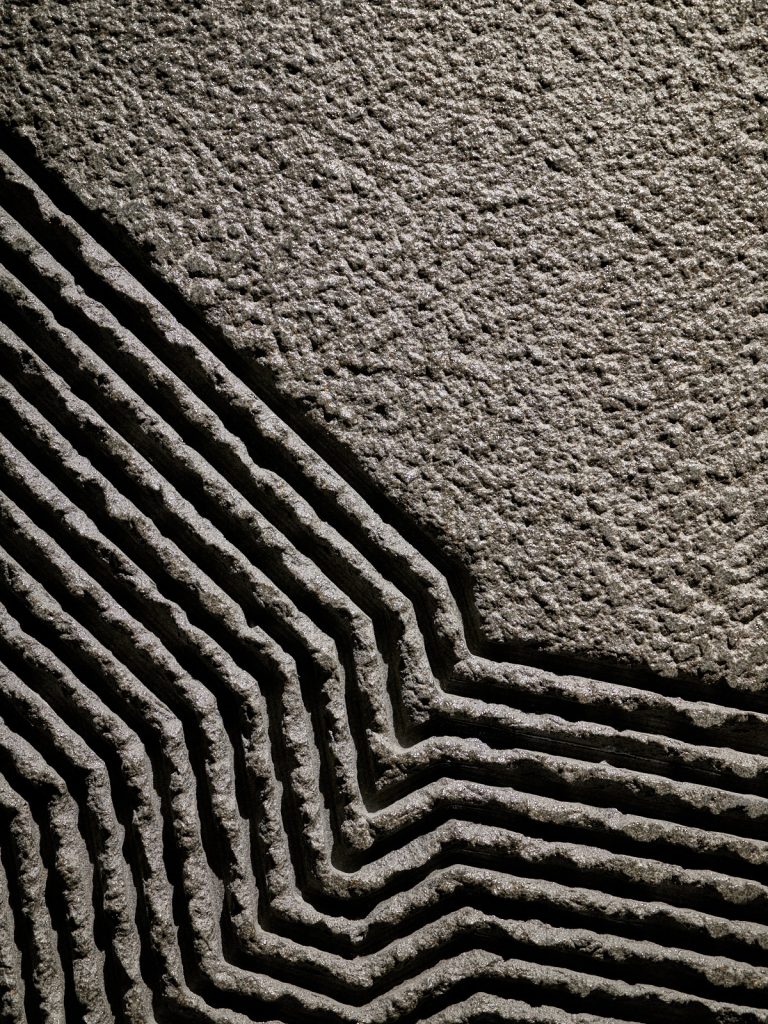
Ömer Pekin, who sees his art practice as a continuously inspiring approach to architectural life, creates works that question the boundaries of the two disciplines. Ömer Pekin studied architecture at Akademie der bildenden Künste Wien in Austria and completed his master’s degree at SCI-Arc, Southern California Institute of Architecture in the United States. As of 2016, he started working at Şevki Pekin Architecture in Istanbul. Ömer Pekin actively pursues both architectural and artistic endeavors and collaborates with local and international art institutions, exhibiting his works both at group shows and solo shows. We talked with him about his most recent installation planned for Qua Granite during the Contemporary Istanbul Art Fair, his artistic practice influencing his architectural work, his artworks completed with natural stone materials and his ongoing projects.
.
You brought the material together within the structure in a different way other than the format which is out of the ordinary accustomed to in the public space in the installation that you realized within the scope of Contemporary Istanbul. What were the sources of inspiration for your artifact?
For this project I had the opportunity to study the production of Qua Granite extensively. The production process of the material was my main source of inspiration. At the same time, the sheer scale of Qua Granite’s production, from the amount of raw materials to their gigantic machinery, led me to study very large rocks, natural stones and sculptures made with natural stone. During my research focusing on the transitions between architecture and sculpture, I had the opportunity to think about the Caryatids. Caryatids, as they are known, are figures holding the roof. They are decorative items that resemble load-bearing elements and are so successfully designed that they make you feel the weight of the roof on top. By examining this phenomenon a bit, we designed an architectural pavilion that develops around three load-bearing columns that we placed by stacking “technical granite” materials produced by Qua Granite in shapes reminiscent of Caryatids. The pavilion, which deals with the themes of weight and lightness, was built by using enough material to cover the four facades of a 10-storey building.
.
.
What would you say about the way the material is handled together with unnatural colors?
I have a series of artworks, produced by creating a texture on aluminum by intensive welding and then coloring it. My latest exhibition showcasing this series of works just ended. I dived into the subject of color again during this exhibition. As an architect, I have always believed that color can be considered as a building material. For example, there are farm buildings planned by Şevki Pekin, the red buildings. There, red is more than just a color, it has become a symbol of the buildings; those buildings are known as “red sheared buildings”. So red has a very distinct effect in this project. Based on this effect, if color is accepted as a building material and we plan our projects precisely with pink, blue or green colors, we create a realm that can provide the transition between the digital and analog world. This summarizes my perception of color in my architecture and art practice.
.
.
You work at the intersection of art and architecture. What are the points of convergence and divergence of these two disciplines?
One of the most important phrases regarding the difference between sculpture and was expressed by Frank Gehry in one of his lectures. The hypothesis was that “if a building has windows, it is architecture, if it does not have windows, it is sculpture”. I don’t know how accurate this conclusion is. For example, is the Statue of Liberty a sculpture or a building? The structure contains many architectural elements. It has staircases, windows, a restaurant, elevators, bathrooms but the form of the structure looks like a figure. For example, if one looks at the shopping-basket-shaped building or the fish-shaped fish restaurant designed by Frank Gehry, one cannot determine what art or architecture is. There isn’t one explanation for this subject. However, I believe this distinction has to do with how the designers position themselves. As for me, I do both.
.
Is natural stone a material you often use in your work? Which kind of stones do you prefer more?
The types of stone I prefer to use vary. In my last exhibition, I worked with basalt. In general, I think natural stone is a very impressive material. For example, when a fracture occurs in natural stone, veins and different textures emerge from it, which can never be imitated by printing. Managing these textures is a process that inspires me.
As we learn more about the properties of natural stone and get to know the material, the range of products in the hands of the architect or artist expands. As a result, different and contemporary designs can emerge. In many of my projects, I am focusing on material research in order to use natural stone in different ways. Sometimes we apply digitally planned textures on the stone, sometimes we use natural stone in our furniture designs. As long as there is an opportunity to experiment, as long as this opportunity is given to the designer, I think that more impressive works can emerge from natural stone every time.
.
.
How did your natural stone works in the “Infatuation” exhibition at Versus Art Project take shape and what kind of story do they tell?
The works in the exhibition were produced with basalt. Basalt creates a unique feeling in the artworks in terms of its color, texture, and structure. The hard structure of the material plays a very important role during production. The processes applied to the stone are first designed in a digital environment and then shaped by CNC machining. In terms of their textures, the artworks aim to generate different forms under different lights by establishing a relationship with the viewer in the space.
.
Which types of natural stones do you prefer to work with and from which sources do you obtain these stones?
Curently, we are mostly working with basalt. The reason we prefer basalt is all about the hardness and durability of the material. However, different natural stones have very different stories, especially stones with fossils in them are very interesting for both architectural and artistic use.

















